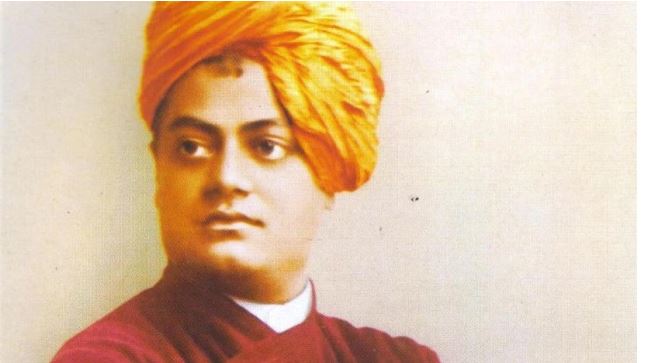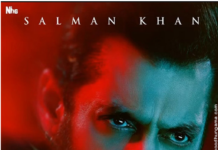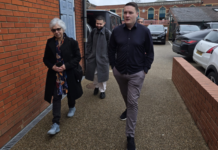Swami Vivekananda, in more ways than one, appeared to be an Adi Shankaracharya incarnate. Besides the fact that the two died at a very young age, not even reaching their 40s, it was their immense love for their mothers that was uncannily similar.
Shankara and Vivekananda took sannyas, which means cutting off all their worldly ties, and yet they could never take their minds off their mothers. Shankara came to serve her during her last days and did the final rites after she passed away, amid massive protests from relatives and caste men. As for Vivekananda, he always carried the guilt of not doing enough for his mother, leaving her to fend for herself at an old age. He would often be seen seeking money from his followers for her well-being. Shankara and Vivekananda, in that way, humanised and socialised a sannyasin, who would otherwise be distant and aloof.
The two emerged on the scene at a time Hinduism was facing insurmountable challenges, almost existential in nature. Shankara rose to take on Buddhism and with his pan-India travels and innumerable shastrarthas (debates) got Hinduism back into the reckoning. In contrast, Vivekananda saw the Indic civilisation being grievously wounded by 1,000 years of foreign rule — while the Muslim invaders stymied the Indic civilisation politically and culturally, British colonisation added economic destitution and deprivation to the list.
Vivekananda realised that a journey across India alone would not be enough to bring Indians out of their long civilisational hibernation; it needed a journey to the West too. Vivekananda found Hinduism too frail and feeble, somehow lingering on the life support, and that it needed external assistance: He realised the spirituality of the East needed to ally with the materialism of the West. It is with this objective that Vivekananda chose to visit America which he dazzled with his 1893 Chicago speech at the World Religion Conference and whose materialistic fortress he stormed with his spiritual, Vedantic cannons.
One needs to realise that there is a fundamental difference in the milieu Shankara and Vivekananda appeared in. While the former came into the picture when India was materially prosperous and spiritually thriving, the latter’s India was depraved, deprived and degenerated. It was an area of darkness. Vivekananda, therefore, had to work on two spheres: One, the higher sphere, where he delved into the sublime Vedanta philosophy on the lines of Shankara. Simultaneously, he would also be seen to be catering to the lower physical self, for there were many who just managed to make a life out of endless miseries.
This explains why “the Modern Monk”, as Hindol Sengupta refers to Vivekananda in his biography, would rebuke a Sanskrit scholar to “first do something for those who are dying of hunger, then come to me for a discussion on Vedanta”. He would also take on religious leaders for turning Hinduism into “don’t-touchism” and believed people would be “nearer to heaven through football than through the study of Gita”.
Vivekananda focused as much on the physical aspect of a Hindu as he delved into the spiritual. Just like Dayananad Saraswati, who emphasised the need to have a good physical body which he often used to his advantage during debates, Vivekananda wanted Hindus to be physically stronger. He thus exhorted them to eat more meat products. Being a “fasting and feasting” monk, as well-known Bengali novelist and writer Sankar introduces him in his latest book, Vivekananda provided historical legitimacy to meat eating, a position that remains contentious among historians. Sankar quotes him as saying: “The Swami said… that the ancient Brahmins of India were accustomed to take meat and even beef and were called upon to kill cows and other animals in yajnas or for giving madhuparka to guests. He also held that the introduction and spread of Buddhism led to the gradual discontinuance of flesh as food, though the Hindu shastras had always expressed a theoretical preference for those who avoided the use of flesh-foods.”
Vivekananda was constantly on the move and for days he would be on fast, given that he would normally desist from asking food from people and patiently wait till he was offered. But in good times he would love eating the choicest of foods. Khichdi, pulao, biryani would be among his favourites. He had such a sweet tooth that Swami’s gurubhai Premanand’s younger brother Shantiram Ghosh once jokingly said that Vivekananda’s favourite fruit was gulab jamun! Is it any surprise that he was once heard saying: “If you can’t cook well, you can’t be a good sannyasin!” His love for food was also evident when he interpreted Vedanta through a culinary term: “Vedanta is just like tough meat to ailing stomach — very difficult to digest.” And when he was told that monks should not be stout, he showed his own, saying “This is my insurance against famine!”
When Vivekananda was not eating or cooking, he was leading a life manifested in the Vedanta. Hindol Sengupta mentions at least two incidents when Vivekananda let the caste system, an institution he otherwise defended so passionately, go up in the smoke — quite literally by puffing. First, when the young Narendra, as Vivekananda was called then, smoked from hookahs assigned for different communities and declared that they didn’t taste differently. (Smoking remained his lifelong weakness, along with good food.) And the second time as a sannyasin when after realising the folly of his initial trepidation he enjoyed smoking with a lower caste man in Vrindavan.
If Vivekananda’s life was unconventional, its traces could be found in his childhood itself. He was so naughty as a child that his mother would often complain: “I asked Shiva for a son like the God himself, and he has sent me one of his poltergeists.” To add to it all, he was just about average in studies. The man who enthralled the world with his knowledge in English and History could get in the two subjects 47 and 45 per cent respectively, in the university entrance exam!
Today, when we look at Vivekananda, we realise how he foresaw the future of humanity in Eastern spirituality joining hands with Western materialism. In fact, he conceded that the Ramakrishna movement wouldn’t have taken off without the help of his supporters in the West, saying matter of factly that people in India would praise your work but won’t take out a penny for the cause! It was he who gave Vedanta a humane face, making the uplift of the poor the parameter of its success. He defended the caste system as a principle, but vociferously objected to caste discriminations. A Vedantist, after all, can’t but see this entire creation as one. And his food habits were as eclectic as those of today’s seculars/liberals, if not more.
Maybe it was his unconventional nature that made Vivekananda popular across the world, but as much unpopular back home. Sankar writes in The Monk As Man how two high court judges not just refused to preside over a meeting organised to mourn Vivekananda’s death in 1902, but also one of them said that “if Bengal had a Hindu king, Swami Vivekananda would have been hanged”! The hostility can also be gauged from the fact that Vivekananda’s colleagues found it difficult to raise funds to erect a small temple over the site where he was cremated. The work could not begin before 1907, and it took more than 17 years to finish.
But then, is it any surprise? For, Vivekananda was as much the product of his time as he was ahead of it. And this explains why he remains so relevant today, almost 120 years since he last walked amongst us.
(Utpal Kumar@First Post)

Readers like you, make ESHADOOT work possible. We need your support to deliver quality and positive news about India and Indian diaspora - and to keep it open for everyone. Your support is essential to continue our efforts. Every contribution, however big or small, is so valuable for our future.











